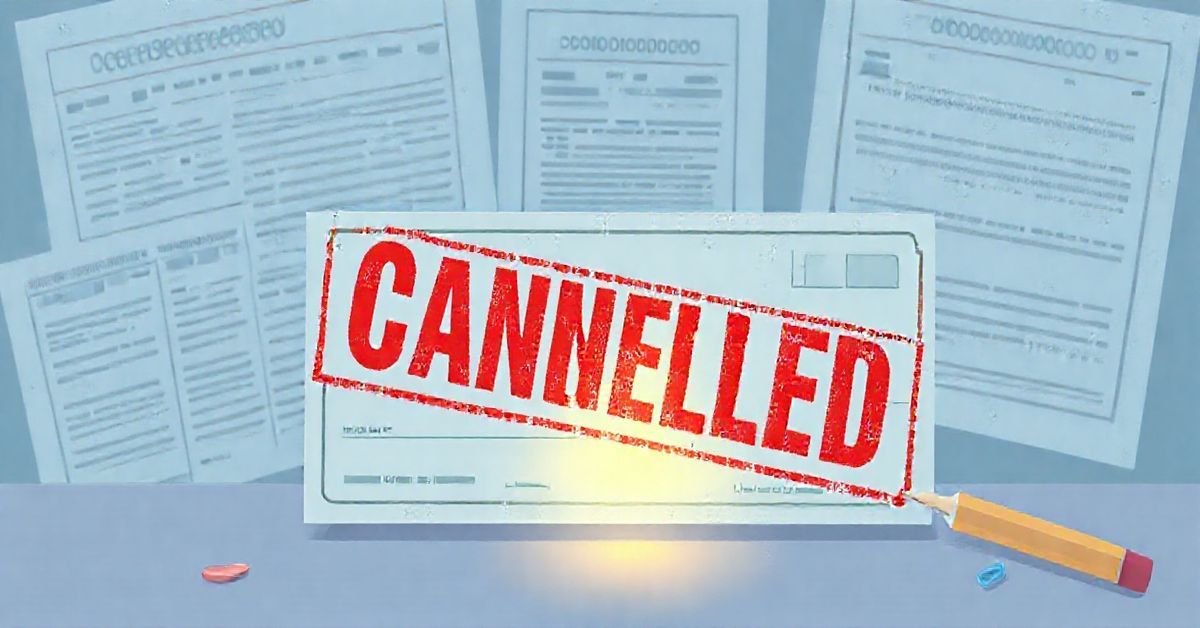Understanding the CP98 Notice: Your Refund Paid a Tax Bill
Hey there! Have you ever been expecting a tax refund only to find out it never showed up in your bank account? If the IRS sent you a CP98 notice, you’ve probably just discovered where your refund went. It wasn’t lost; it was used to cover a previous tax debt. Let’s break down what this means for you and what steps you can take.
What is a CP98 Notice?
The IRS sends out a lot of different notices, and it can feel like you need a decoder ring to understand them all. A CP98 notice is relatively straightforward. It’s basically an official letter from the IRS letting you know that they’ve taken your current tax refund and used it to pay off some other tax debt you owe. This might be for a past year, for a penalty, or for interest you haven’t paid.
Why Did I Get a CP98 Notice?
The main reason you receive a CP98 is that you have an unpaid tax debt on record with the IRS. The IRS is allowed to offset your refund to pay outstanding tax bills. This is referred to as the Treasury Offset Program. When the IRS processes your current year tax return, their system automatically looks for any debts you may have. If it finds one, it applies your refund towards that debt.
Here’s a more detailed look at the common scenarios:
Past-Due Income Tax
The most common reason is that you owe taxes from a previous year. Maybe you filed your taxes late or didn’t pay the full amount you owed. The IRS keeps track of this, and when you are expecting a refund, they use it to recover that money.
Penalties and Interest
Even if you’ve paid all your taxes, you might owe penalties or interest. Penalties occur when you file your taxes late or make a mistake. Interest is charged on the unpaid tax amount. These fees can add up, and the IRS will use your refund to pay these off as well.
Other Federal Debts
Sometimes, your refund may be applied to debts beyond taxes. This can include things like past-due student loans or child support payments. The IRS is often tasked with collecting these debts as part of the Treasury Offset Program.
How Does the CP98 Notice Affect Me?
Receiving a CP98 notice means a few things:
You Won’t Get Your Refund
This is the most obvious impact. The refund you were expecting is gone. It has been applied to the existing debt. This can throw a wrench in your budget if you were counting on the money.
Acknowledge the Debt
The CP98 confirms that the IRS is aware of the debt you have, and it highlights the amount you owed. It’s an official notification, so it’s essential to take it seriously. The good news is that they have used your refund to pay down that debt.
Possible Future Offsets
If you have ongoing debts, you might face future refund offsets until the debt is fully paid. This means that any refund you may be expecting can be used by the IRS to satisfy the debt.
What Should I Do After Receiving a CP98 Notice?
Here are some practical steps you can take:
Verify the Information
First, make sure the debt mentioned in the CP98 notice is accurate. Check your records to verify if you actually owe the amount they claim. Look at your tax returns from previous years, payment records, or other documentation.
Contact the IRS
If you’re not sure about the debt or if you think there is a mistake, contact the IRS as soon as possible. You can call the number provided on the notice or visit their website. Have your Social Security number and the notice handy when you call. Be ready to explain your situation clearly and calmly, and take notes of all conversations.
Understand the Remaining Balance
The notice should show you how much debt was paid by the refund. It’s also a good idea to verify how much you still owe if anything. This will allow you to make a plan to address any remaining debt.
Create a Payment Plan
If you still have an outstanding balance, look into setting up a payment plan. The IRS offers various payment options, including installment agreements, which may allow you to pay off your debt over time. This can help you manage the debt without significant financial strain.
Prevent Future Offsets
The best way to avoid future offsets is to ensure you’re current on your tax obligations. Double-check you paid everything you owed and file on time each year. If you think you might have difficulty paying, you can make an estimated payment each quarter.
Consider Professional Help
If tax matters seem confusing, you might want to consult with a tax professional, such as a CPA or enrolled agent. They can help you understand your situation better, review your tax records, and give you the correct advice. A professional may be able to negotiate with the IRS or set up payment plans that suit your financial situation.
Understanding Related Concepts
There are a couple of other tax concepts that relate to the CP98 notice. Here are a few:
Treasury Offset Program (TOP)
This is the program the IRS uses to take your refunds to cover your debts. It is not just used for tax debts. It may also apply to past-due student loans, child support, or other federal debts.
Notice of Intent to Offset (CP49)
Before the IRS actually takes your refund, they usually send you a notice telling you they intend to offset it. This is often a CP49 notice. If you get a CP49 notice, it means you have time to take care of the debt before they use the refund to pay it. The CP98 is the notice you receive after the offset has been completed.
Tax Lien
If your tax debt is significant, the IRS may file a tax lien against you. This allows them to claim your property if you do not pay the debt. A lien will show up on your credit report.
Common Mistakes and Misconceptions
It’s easy to get confused about tax matters. Here are a few common mistakes and misunderstandings about CP98 notices:
Ignoring the Notice
Don’t ignore the notice. It’s tempting to brush it off, but this could lead to more issues. Take the necessary steps to verify your debt and address it.
Thinking the Debt is Gone
Just because your refund covered some of the debt, doesn’t mean the debt is completely gone. Always check the remaining balance.
Assuming It’s a Mistake
While mistakes do happen, don’t assume the IRS is wrong. Verify the information before assuming it is an error.
Not Setting Up a Payment Plan
If you can’t pay the debt immediately, consider a payment plan. This can prevent further collection action from the IRS.
Final Thoughts
Receiving a CP98 notice might be frustrating, but it doesn’t mean the end of the world. Now you know it simply means that your refund was applied to a past-due debt. By understanding why you received this notice and taking prompt action, you can resolve the issue and keep your financial situation on the right track. If you need more help, there are resources available. Consulting with a tax professional is one of the best steps you can take.

